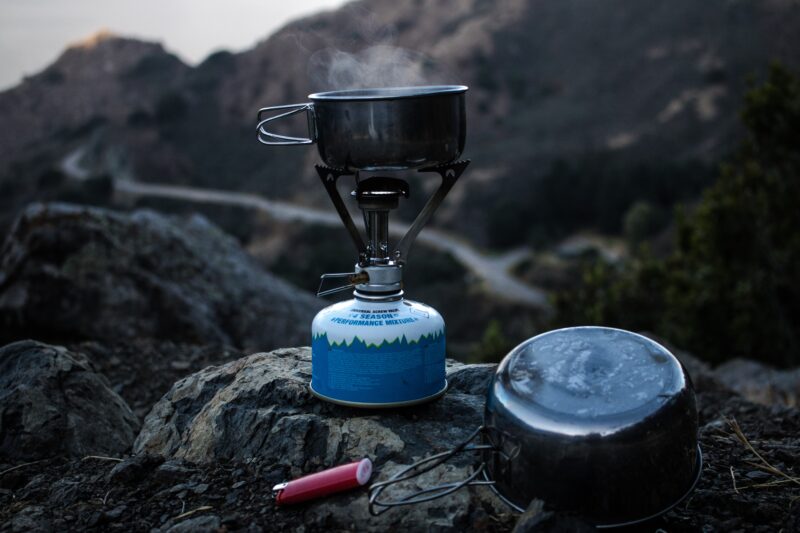Camping is an exciting and rewarding way to experience nature, reconnecting us with the great outdoors. It’s also an excellent way to be more mindful of how we interact with our natural environment. Sustainable camping is an essential part of responsible nature enjoyment. It teaches us to be conscious of our actions so that the environment is not adversely affected.
Practicing sustainable camping means taking the time to understand how to leave no trace, minimize our environmental impact, and respect natural resources. With the proper knowledge, we can ensure that each camping trip is a positive experience that leaves a lasting impact on nature.
Let’s kickstart our discussion on how to camp with care by defining sustainable camping.
What is sustainable camping?
Sustainable camping, also known as eco-friendly or green camping, is a style of camping that minimizes the impact of human activities on the environment and local ecosystems. The goal of sustainable camping is to preserve natural resources and wildlife and maintain the beauty and health of the outdoor environment for future generations.
Sustainable camping practices include using reusable and biodegradable products, minimizing waste and litter, conserving energy and water, reducing single-use plastics, practicing Leave No Trace principles, and using camping gear with a minimal environmental impact. Campers may also choose to camp in areas with low environmental impact, such as designated campsites or wilderness areas, and avoid areas that are fragile or sensitive to human activities.
Overall, sustainable camping is about making a conscious effort to reduce the impact of our outdoor activities on the environment and to preserve the natural beauty of the outdoors for future generations to enjoy.
Focusing on the principles of Leave No Trace
The Leave No Trace principle is a set of guidelines for outdoor ethics that promotes responsible and low-impact recreation in natural environments. The goal of Leave No Trace is to minimize the impact of human activities on the environment so that the land and its resources can be preserved for future generations.
The seven Leave No Trace principles are:
- Plan and prepare: Research and understand the local area, its regulations, and the Leave No Trace principles.
- Travel and camp on durable surfaces: Stay on designated trails and camp in designated areas to protect vegetation and prevent soil erosion.
- Dispose of waste properly: Pack out all trash, leftover food, and litter, and properly dispose of human waste.
- Leave what you find: Preserve natural, cultural, and historical artifacts and leave them as you found them.
- Minimize campfire impact: Use a stove for cooking, minimize campfires, or use designated fire rings if fires are allowed.
- Respect wildlife: Observe wildlife from a distance and do not feed or approach them.
- Be considerate of other visitors: Keep noise levels down and respect other visitors’ privacy and experiences.
By following these principles, outdoor enthusiasts can enjoy nature’s beauty while protecting it for future generations. The Leave No Trace center is a non-profit organization that promotes and teaches Leave No Trace principles and provides education and outreach programs to help protect the environment.
Tips for sustainable camping
Moving forward, we know you are already on your way to becoming the most responsible camper you can be. If not, you would not be here reading these tips on how to camp more responsibly.
Here are some tips and hacks for sustainable camping:
1) Reduce waste
Pack a reusable water bottle, utensils, plates, and cups, and bring food that doesn’t generate a lot of packaging waste. Avoid single-use plastics and try to pack out all of your trash.
2) Use a camping stove
Instead of building a campfire, use a camping stove for cooking. This not only minimizes the impact on the environment, but it’s also safer and more convenient.
3) Choose eco-friendly gear
Look for camping gear made from sustainable materials, such as recycled and biodegradable products. In addition, consider purchasing gear with a low environmental impact, such as a solar-powered lantern or a rechargeable battery.
4) Minimize energy use
Use energy-efficient lighting, such as LED lights, and unplug electronics when not in use. Also, consider using a solar-powered battery or generator to charge devices.
5) Use biodegradable soap and shampoo
When washing up, use biodegradable soap and shampoo to minimize the environmental impact.
6) Respect wildlife
This must be emphasized more. Keep a safe distance from wildlife, and never feed them. Store food securely to prevent attracting wildlife to your campsite.
7) Follow Leave No Trace principles
As noted above, stick to designated trails and camp in designated areas. Avoid damaging vegetation, and properly dispose of all waste, including human waste.
Following these tips and hacks can help minimize your environmental impact and contribute to sustainable camping practices.
How to purchase and use eco-friendly camping gear?
Consider the following tips and hacks to purchase and use eco-friendly camping gear.
-
Do your diligence.
Research the brands that offer eco-friendly camping gear, and read product reviews and customer feedback. Look for gear made from sustainable materials and produced by companies with environmentally responsible practices.
-
Look for certifications.
Look for products with certifications, such as the bluesign system, which indicates that the product meets strict environmental and social responsibility standards.
-
Invest in quality.
Eco-friendly camping gear can often be more expensive than traditional gear. Still, it’s often more durable and can last longer. So invest in quality gear that will last rather than buying cheap gear that needs to be replaced frequently.
-
Use gear properly.
Proper use and maintenance of camping gear will help extend its lifespan, reducing the need to replace it frequently. Read the manufacturer’s instructions and follow them closely to ensure that the gear is used correctly.
-
Sell or donate gear.
When camping gear is no longer needed, consider selling or donating it rather than throwing it away. This helps reduce waste and ensures that the gear is used for as long as possible.
Yes, it is highly plausible to purchase and use eco-friendly camping gear that helps minimize your environmental impact while ensuring that you have high-quality gear for your outdoor adventures.



